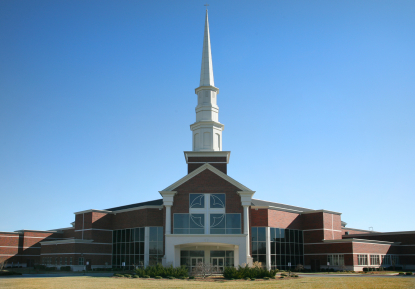
 What’s the future of denominations? What are the characteristics of those that thrive and those that decline? Are church bodies more managed than led?
What’s the future of denominations? What are the characteristics of those that thrive and those that decline? Are church bodies more managed than led?
By Ronald E. Keener
There’s the old saw that denominations exist today only because of real estate and pension plans. I heard that said 15 years ago and sure, it’s an overstatement, but it makes a relevant point.
At the end of February Craig Groeschel, founding pastor of LifeChurch.tv in Oklahoma City, OK (and other cities and states) expressed some thoughts about the United Methodist Church on his blog. He once worked within the UMC before founding his 20,000-member multi-site, multi-state, nondenominational church. (“Our burden to start a church became greater than our loyalty to a denomination.”)
You can go to his blog to read his six installments about the Methodists — “the huge divide between liberal Methodists and evangelical Methodists” and the UMC using $20 million for a PR campaign rather than church planting.
The state of denominations
But I turned to George Bullard, an expert in denominationalism, now with The Columbia Partnership, a “loving critic and a critical lover” of denominations for many years. I asked him to look at the state of denominations and how they’re doing. What are their characteristics when they’re thriving — and dying, even if a little at a time?
“Denominations that are thriving are engaging in several activities,” Bullard says. “First, they are planting a number of new congregations each year equal to at least three percent of the number of congregations they had at the beginning of the year.
“Second, they have figured out how to come alongside their faithful, effective, and innovative congregations and help them soar to the next dimension of ministry.
“Third, they do triage with congregations who say they want to transform and pick the ones who have the best readiness and help them to transform. They are doing this with at least three percent of their congregations each year.
“Fourth, they have figured out how to support their dying, subsistence, and long-term declining congregations without allowing them to consume an inordinate amount of their denominational staff time, passion and finances.”
Steady decline
Those are the thriving ones. What of the dying ones? Bullard says denominations that are experiencing a steady decline and are slowly dying are engaging in the following activities:
“First, they are focusing on the legislative processes of their denomination to micro-manage their policies and positions on various issues. The big one right now is the ordination of gay and lesbian clergy.
“Second, they are regularly restructuring their denomination in response to economic crises and the lack of support for a three-tiered, competing denominational system.
“Third, they are entangled with what to do with their auxiliary and affiliated organizations, such as colleges, seminaries, retirement homes, children’s homes, etc.
“Fourth, they focus too deeply on ecumenical activities and organizations, assuming that unity of Christian organizations leads to more vital ministry.”
Craig Groeschel made some of the same points in his blog. Bureaucracy gets in the way, much as the UMC did for Groeschel. (“Today’s emerging Christian leaders are eager to make a difference — now. If they are tied down to cumbersome process that delays their opportunities to make a difference, they are likely to do ministry elsewhere.” As he did.)
Necessary for transformation
Bullard goes on: “Further, they are not planting many churches, not helping their faithful, effective, and innovative churches to move forward, trying to transform congregations who are not willing to do what is necessary to be transformed, and spending more than half of their staff field time trying to find the answer for ministry among small, dying and subsistence level congregations.
“Finally, they have alienated a larger percentage of the generations born after July 20, 1969 when humankind first walked on the moon, so these people are going to churches of other denominations or nondenominational churches,” Bullard says. None of it is easy work: Most of it is a strong vision carried out not by managers, but by leaders.
COMMENTS? Ron@churchexecutive.com


